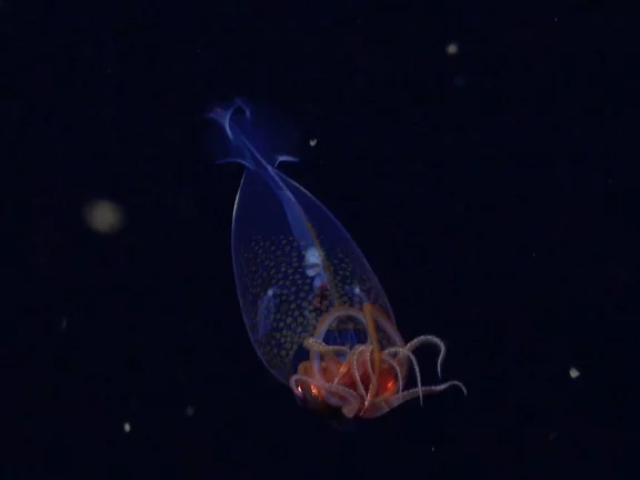Colossal Squids Filmed Alive in Natural Habitat
The discovery of the colossal squid in its natural habitat is a significant milestone in the study of this elusive creature, and the footage provides valuable insights into its behavior and habits, shedding light on the mysteries of the deep ocean and its inhabitants.

The Schmidt Ocean Institute's Research Vessel Falkor has captured the first confirmed live footage of a colossal squid in its natural habitat, nearly a century after its discovery, providing a rare glimpse into the life of one of the ocean's most elusive creatures.
The footage, recorded by the remotely operated vehicle "SuBastian" on March 9, shows a one-foot-long juvenile squid at a depth of 1,968 feet near Antarctica. The discovery was made during an Ocean Census flagship expedition to explore and catalogue marine biodiversity. The colossal squid, Mesonychoteuthis hamiltoni, is a mysterious creature that can grow up to 23 feet and weigh over 1,100 pounds.
The squid's identification was confirmed by marine biologist Aaron Evans, a glass squid specialist, who recognized the characteristic hooks on its tentacles. This discovery provides new insights into the species, as the colossal squid's life cycle is still unknown. The footage was verified by experts and marks the first time a colossal squid has been seen alive at depth.
The research vessel also captured footage of a glacial glass squid for the first time, opening a new window to delicate ocean life and shedding light on how animals survive within its depths. The footage of both squid species is significant, as it provides a glimpse into the life of these mysterious creatures and their habits in the deep ocean.
The research vessel will not be returning to Antarctica until 2028, but it will be operating in the South Atlantic Ocean off the coasts of Argentina and Uruguay over the next four years, potentially leading to more discoveries about the colossal squid and other deep-sea creatures.